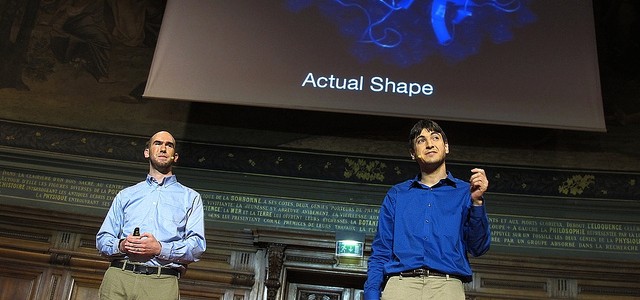 While bridge or undergraduate research programs to increase retention are commendable, they only serve a limited number of students compared to the thousands of high school and community college students entering universities to study STEM. Over the summer I attended the final presentations of community college students participating in the Howard Hughes Medical Institute Summer Transitions Workshop at the University of North Texas. The student enthusiasm and motivation generated by the program was amazing, but only about 16 students can participate in the program each summer. What can we offer all the other high school and community college students who need encouragement to stay in STEM, but can’t get into similar research programs?
At a recent conference, I was talking to a fellow member of the ACRL Science and Technology Section about citizen science. It dawned on me that citizen science may be the answer to involve a larger number of STEM undergraduates in actual research and give meaning to what they are learning in college.
Zooniverse, maintained by the Citizen Science Alliance, provides websites for researchers who want volunteers to collaborate with them to do “real research online.” Zooniverse started with the well-known Galaxy Zoo and has grown to 24 projects with over one million citizen participants. Scientific American maintains an online list of citizen science projects that is 10 pages long. Some of these projects even have a gaming format, an example being FOLDIT to create protein folding structures. These opportunities would be especially convenient for the many students who work part- or even full-time while attending college; they can participate at 2 am and still experience hands-on research.
I’m planning to raise the possibility of incorporating citizen science into at least the library resources for some introductory biology courses, if not into the curriculum itself. I’ll let you know how that conversation goes!
Photo attribution: “PhotonQ-Seth Cooper and Firas Khatib on FOLDIT,” by PhOtOnQuAnTiQuE, 2012, CC BY-NC-ND 2.0.
While bridge or undergraduate research programs to increase retention are commendable, they only serve a limited number of students compared to the thousands of high school and community college students entering universities to study STEM. Over the summer I attended the final presentations of community college students participating in the Howard Hughes Medical Institute Summer Transitions Workshop at the University of North Texas. The student enthusiasm and motivation generated by the program was amazing, but only about 16 students can participate in the program each summer. What can we offer all the other high school and community college students who need encouragement to stay in STEM, but can’t get into similar research programs?
At a recent conference, I was talking to a fellow member of the ACRL Science and Technology Section about citizen science. It dawned on me that citizen science may be the answer to involve a larger number of STEM undergraduates in actual research and give meaning to what they are learning in college.
Zooniverse, maintained by the Citizen Science Alliance, provides websites for researchers who want volunteers to collaborate with them to do “real research online.” Zooniverse started with the well-known Galaxy Zoo and has grown to 24 projects with over one million citizen participants. Scientific American maintains an online list of citizen science projects that is 10 pages long. Some of these projects even have a gaming format, an example being FOLDIT to create protein folding structures. These opportunities would be especially convenient for the many students who work part- or even full-time while attending college; they can participate at 2 am and still experience hands-on research.
I’m planning to raise the possibility of incorporating citizen science into at least the library resources for some introductory biology courses, if not into the curriculum itself. I’ll let you know how that conversation goes!
Photo attribution: “PhotonQ-Seth Cooper and Firas Khatib on FOLDIT,” by PhOtOnQuAnTiQuE, 2012, CC BY-NC-ND 2.0.
Related


Leave a Reply